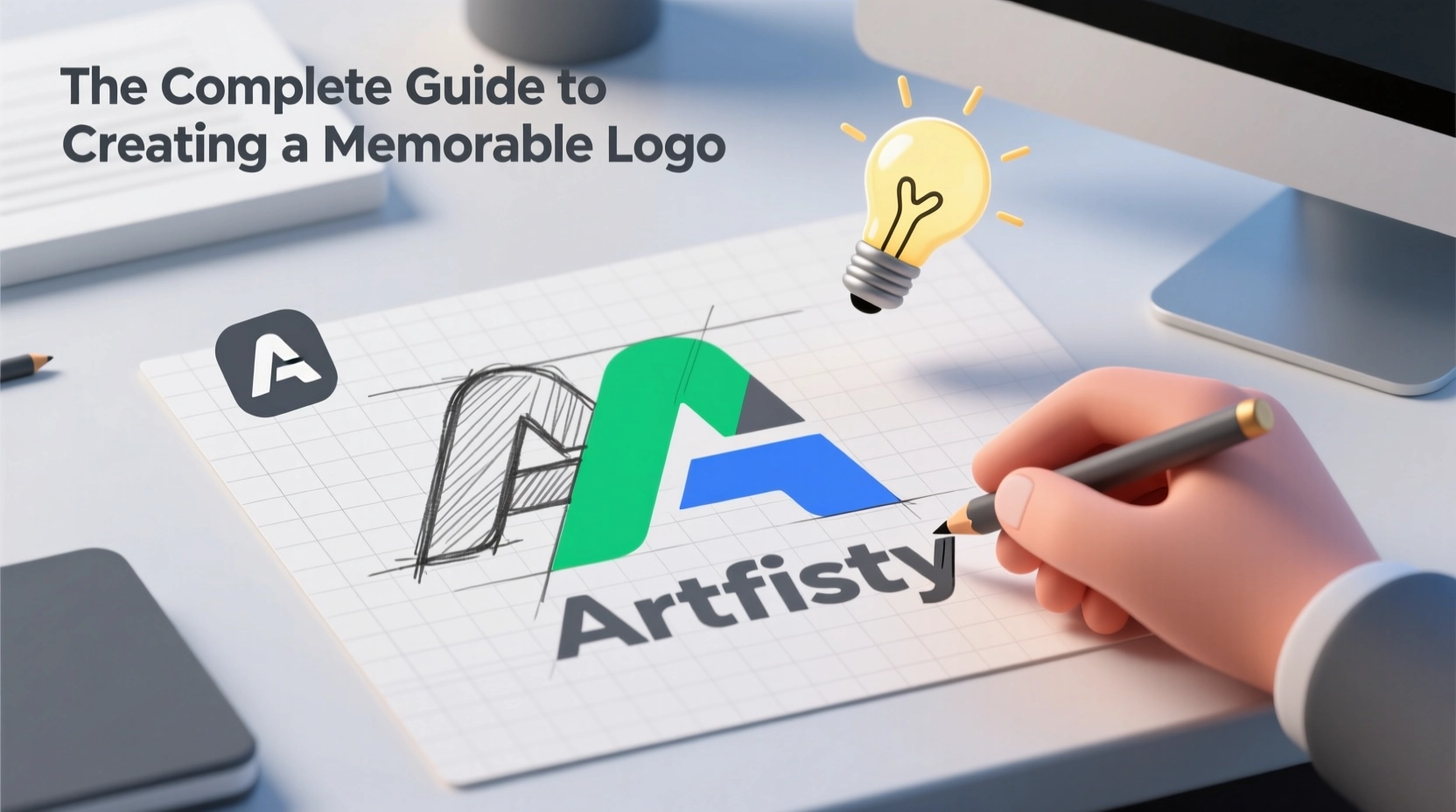Introduction
Creating a memorable logo requires more than just good design—it requires strategy, psychology, and an understanding of your audience. In today's crowded marketplace, your logo serves as the visual cornerstone of your brand identity, often forming the first impression potential customers have of your business.
A well-designed logo can communicate your brand's values, establish credibility, and create an emotional connection with your audience. According to research, 75% of consumers judge a company's credibility based on its website design, with the logo being a critical component of that first impression.
"Your logo is not just a graphic. It's the embodiment of your brand's personality, values, and promise to customers."
— Maya Torres, Brand Strategist
Core Design Principles of Effective Logos
Simplicity
The most memorable logos are often the simplest. Think of Nike's swoosh or Apple's apple—minimalist designs that are instantly recognizable. Avoid clutter and focus on a single, powerful concept that can be easily understood at a glance.
Versatility
Your logo should work across various mediums and sizes—from a business card to a billboard, from a website to a mobile app. Test your logo in different contexts to ensure it remains effective and recognizable.
Memorability
A memorable logo sticks in people's minds after just a few seconds of viewing. Focus on creating a distinctive mark that stands out from competitors while remaining appropriate for your industry.
Timelessness
While design trends come and go, your logo should have staying power. Avoid overly trendy elements that may quickly become dated. Aim for a design that will remain relevant for years to come.
The Logo Design Process: Step by Step
Research & Discovery
Before putting pen to paper (or cursor to screen), conduct thorough research into your industry, target audience, and competitors. Understand your brand's core values, mission, and unique selling propositions.
Key Questions to Answer:
- • Who is your ideal customer?
- • What makes your brand different?
- • What emotions do you want your brand to evoke?
- • What are your industry's visual conventions?
Concept Development
Based on your research, begin developing logo concepts. Create multiple variations exploring different directions—typographic, symbolic, and combination marks. Don't limit yourself at this stage; the goal is to generate a wide range of ideas.
Wordmarks
Symbols
Combination
Refinement & Feedback
Narrow down your concepts to 3-5 strong options and refine them. Seek feedback from stakeholders, but be selective about whose opinions you consider. Remember, you're designing for your target audience, not personal preferences.
Common Logo Design Mistakes to Avoid
Overcomplication
One of the most common mistakes is trying to include too many elements. A cluttered logo becomes confusing and loses impact, especially at smaller sizes. Remember, less is often more when it comes to logo design.
Trend Chasing
While it's important to be aware of design trends, basing your entire logo on a passing fad can quickly make your brand look dated. Focus on creating a timeless design that will remain effective for years.
Poor Typography
Using trendy or overly decorative fonts can make your logo difficult to read and limit its versatility. Choose typefaces that are legible and appropriate for your brand personality.
Inadequate Testing
Failing to test your logo in various contexts (different sizes, backgrounds, mediums) can lead to unexpected problems. Always test thoroughly before finalizing your design.
Testing Your Logo: Getting It Right
Before finalizing your logo, put it through rigorous testing to ensure it meets all the criteria for effectiveness. Here's a comprehensive testing checklist:
Technical Tests
- Test at various sizes (from favicon to billboard)
- Check in black and white
- Test on different backgrounds
- Verify scalability (vector format)
Perception Tests
- Show to target audience members
- Ask what emotions it evokes
- Test memorability after brief exposure
- Compare with competitor logos
Conclusion
Creating a memorable logo is both an art and a science. It requires creative vision, strategic thinking, and meticulous attention to detail. By following the principles and process outlined in this guide, you'll be well on your way to developing a logo that not only looks great but effectively communicates your brand's essence.
Remember, your logo is just one component of your overall brand identity. It should work in harmony with your typography, color palette, imagery, and voice to create a cohesive and compelling brand experience.
The most successful logos aren't necessarily the most complex or expensive—they're the ones that perfectly capture the spirit of the brand they represent. Focus on authenticity, clarity, and emotional resonance, and you'll create a logo that stands the test of time.
Jessica Davis
Brand Strategist & Design Expert
With over 12 years of experience in brand strategy and design, Jessica has helped hundreds of companies establish compelling visual identities. She specializes in translating brand values into powerful visual expressions.



